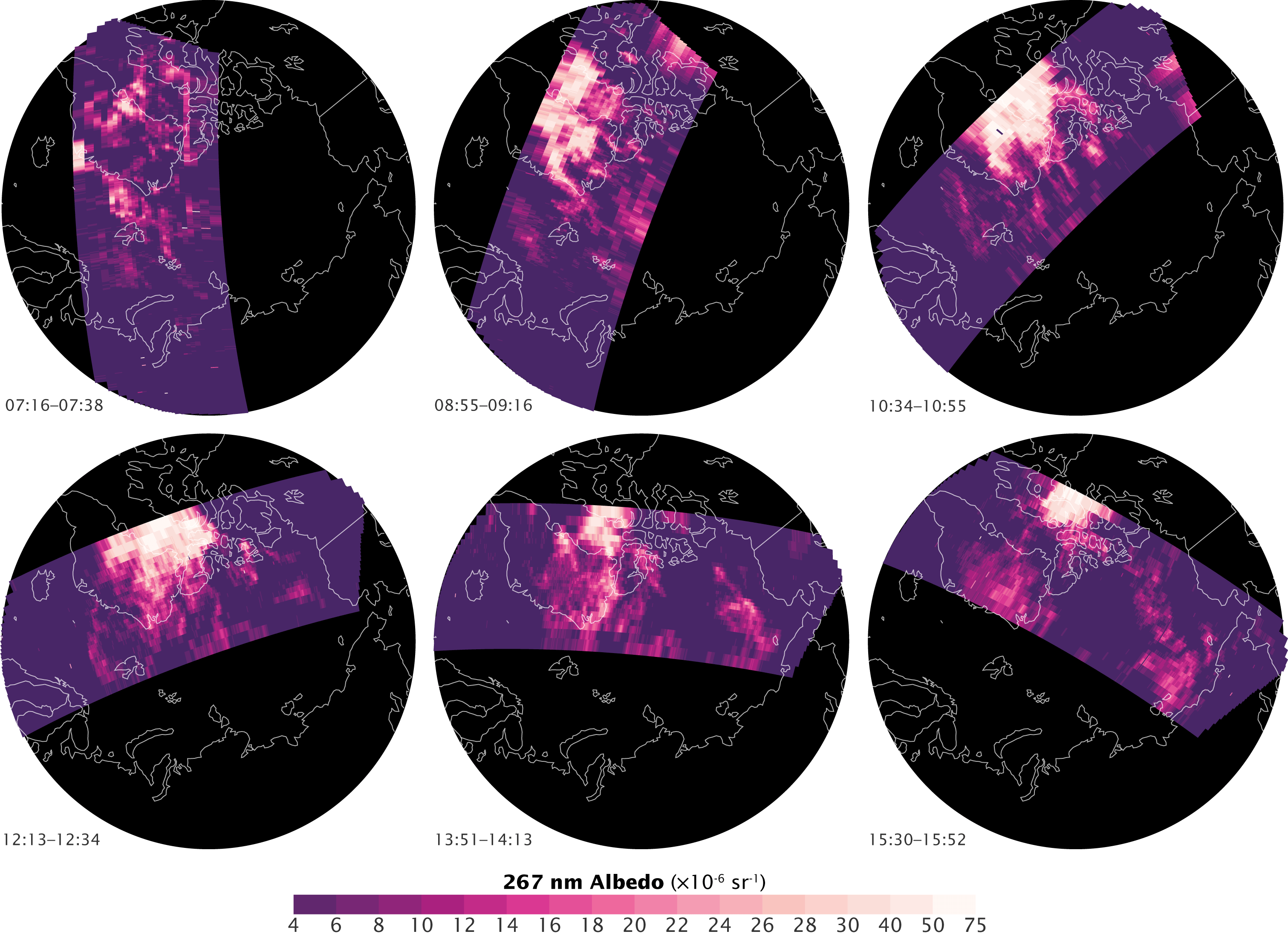[/caption]
Mysterious "night shining" or noctilucent clouds are beautiful to behold, and are usually seen during the summertime, appearing at sunset. They are thin, wavy ice clouds that form at very high altitudes and reflect sunlight long after the Sun has dropped below the horizon. Scientists don't know exactly why they form, but continue to observe them – both from Earth and from space. These images were taken by the Ozone Monitoring Instrument (OMI) on NASA's Aura satellite.
Also called polar mesospheric clouds, they are puzzling scientists with their recent dramatic changes. They used to be considered rare, but now the clouds are growing brighter, are seen more frequently, are visible at lower and lower latitudes than ever before, and -- as these satellite image reveal -- they are now even appearing during the day.
[caption id="attachment_66582" align="aligncenter" width="580" caption="Noctilucent clouds over Kendal Castle, England in June 2010. Credit: Stuart Atkinson"]
[/caption]
Noctilucent clouds form in an upper layer of the Earth's atmosphere called the mesosphere during the Northern Hemisphere's summer – at an altitude of 80 km (50 miles). They can start forming as early as May, and extend through August. They can also be seen in high latitudes during the summer months in the Southern Hemisphere.
What could the observed changes mean? Some scientists believe they are a good gauge of even the tiniest changes in the atmosphere, as they are extremely sensitive to changes in atmospheric water vapor and temperature. The clouds form only when temperatures drop below -130 degrees Celsius (-200 Fahrenheit), when the scant amount of water high in the atmosphere freezes into ice clouds.
Scientist Matthew DeLand of Science Systems and Applications Inc. and NASA's Goddard Space Flight Center has been monitoring polar mesospheric clouds with instruments that were actually designed to study ozone, including the OMI, which provides more detailed and frequent observations than previous instruments. This gives DeLand a way to refine his previous measurements of a long-term trend towards more and brighter noctilucent clouds linked to rising greenhouse gases.
These images at the top of this article show OMI measurements of polar mesospheric clouds on July 10, 2007. The clouds, detectable because they are the only things that reflect light in this part of the atmosphere, are shown in white and pink. The Aura satellite travels in a polar orbit, circling from south to north as the Earth turns beneath it. As a result, the satellite gets several opportunities to image the poles every day. This series of images shows the clouds over six consecutive orbits between 7:16 and 15:52 Universal Time. Throughout the day, a wide area of polar mesospheric clouds developed over northern Greenland and Canada, peaking around 10:30 UTC (the third orbit).
Another instrument observing these clouds is the Solar Backscatter Ultraviolet (SBUV) instruments, which have flown on seven different satellites over the past 32 years, and that wealth of data is showing how the clouds change throughout the day.
DeLand now has an index to help correct the SBUV measurement trends to account for the time of day. The correction allows him to develop a more accurate view of the long-term trend. Even with the corrections, the trend indicates that the atmosphere has been responding to increased greenhouse gases over the past 30 years.
The fact that polar mesospheric clouds are getting brighter suggests that the mesosphere is getting colder and more humid, says DeLand. Increasing greenhouse gases in the atmosphere could account for both phenomena.
Sources:
NASA Earth Observatory
,
twice
 Universe Today
Universe Today
